The Cassowary is one bird that commands respect and awe. As a biologist I’ve noticed that much of the information circulating about these birds is misleading or downright incorrect. Join me as we travel to North Queensland, Australia for real facts about these amazing creatures.
The Cassowary is dangerous because of its size and strength. They have killed humans with powerful kicks and dagger-like talons that can disembowel with one slash. They will defend their young if needed and can become aggressive if they feel threatened.
The cassowary is an enormous flightless bird, up to 200 pounds and 6 foot tall. This bird is truly a living dinosaur found in the tropical rainforests of Australia and New Guinea. In their native habitat they are generally shy and will try to avoid humans. However, if they are fed they can become aggressive. They deserve their reputation as the “most dangerous bird in the world,” according to experienced zookeepers.
There are three species of cassowary, including the best-known Southern cassowary Casuarius casuarius that lives in the rainforests of far north Queensland. The other two are the Dwarf or Bennet’s cassowary and the Northern or Single-wattled cassowary. They are related to the other flightless ratites including ostriches, emus, rheas, and kiwis.
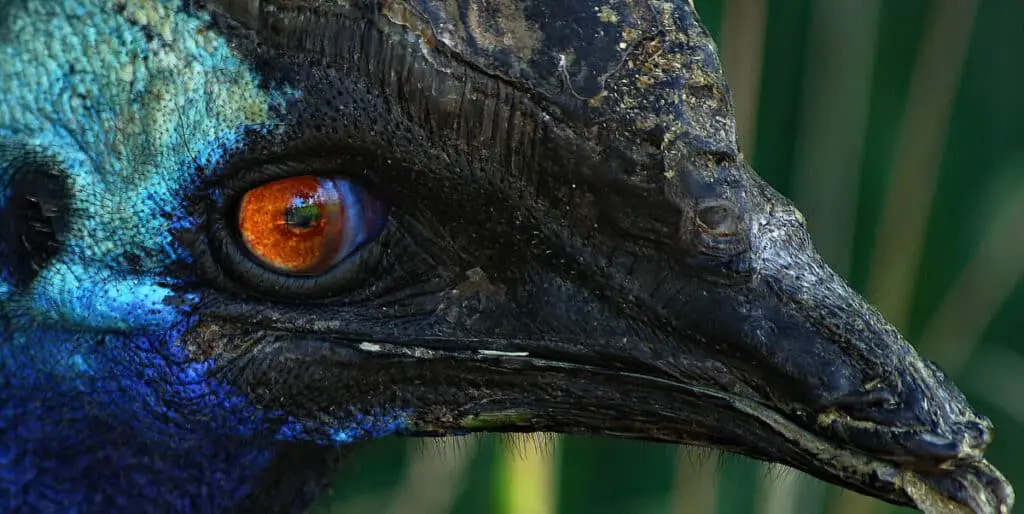
Cassowaries can be dangerous to humans
There is no doubt that cassowaries can be dangerous. They are large, robust birds that can reach up to 6 feet tall (2m) and weigh up to 200 lbs (90kg). They have extremely muscular legs used for running, kicking, and jumping on top of a victim. Cassowaries can run as fast as 30 mph (50 kmh), easily outrunning humans, and can jump up to 5 ft (1.5 m).
They have a powerful kick, jabbing with their claws like daggers, or swiping downwards in a slashing motion. They can also readily launch themselves through the air with their claws extended straight out in what looks like a combined karate kick and rapier attack at waist height.

This next video shows how dangerous these birds can be, as the ranger runs for his life. Not the best quality video, I’m afraid, but amazing footage!
The Cassowary claw is a deadly weapon
The cassowary’s three-toed foot looks like a dinosaur foot, armored with scales and huge talons. The cassowary’s primary weapon is its dagger-like inside claw, measuring 4-5 inches in an adult. Using this incisor claw, they can stab and disembowel animals and humans with their impressive attack capabilities.
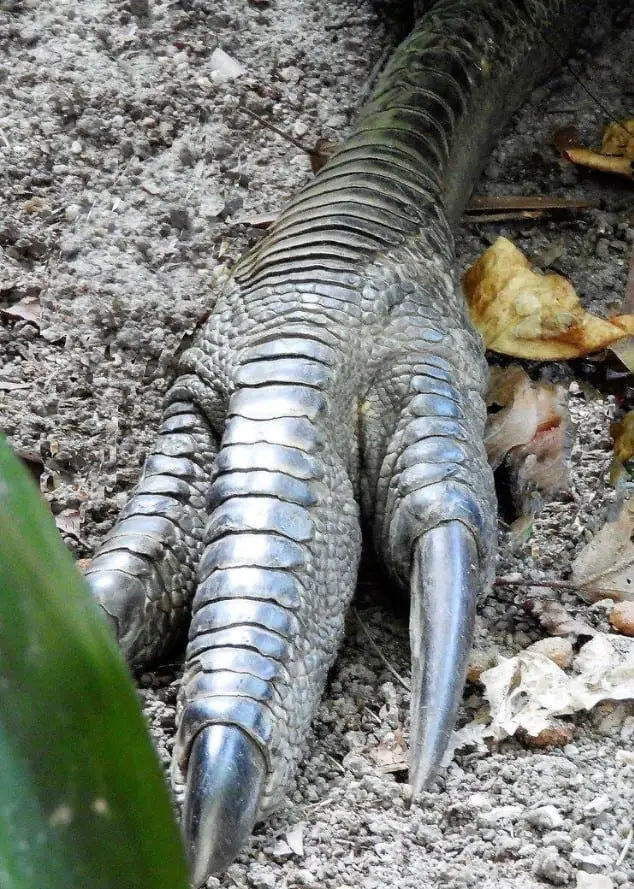

One of the few birds to have killed humans
The most recent human victim of a cassowary attack was in 2019 in Florida, where a 75-year old man kept exotic birds. One of his cassowaries attacked and clawed him severely after he fell to the ground, and he died in hospital later that day.
Here’s a news report on this incident with good video footage. It will give you a good sense of the size of these birds. But, more than anything, it makes me question why any sane individual would choose to keep cassowaries as pets!! OK, I can see having a cassowary in a zoo, but why would you want to turn your backyard into a real life Jurassic Park?!
In 1999, Christopher Kofron of the Queensland Parks and Wildlife Service had counted 221 known cassowary attacks in Queensland, with 150 on humans. He reported at the time that attacks occurred nearly every year and most involved expectations of being fed, or in defense of their food and chicks.
In 2012, a cassowary kicked an Australian tourist off a cliff while he and his family were visiting Babinda Boulders in Queensland. The cassowary kicked him in the back so hard that it sent him tumbling down a bank. He reported, “It was pretty high, about seven foot. I hit this ledge near the bottom and bounced off into the drink.”
In 1995, an Australian male came home from a run in Mount Whitfield Conservation Park, bleeding from a close encounter with a cassowary. He told his wife, “‘Oh my god, it was Jurassic Park!”
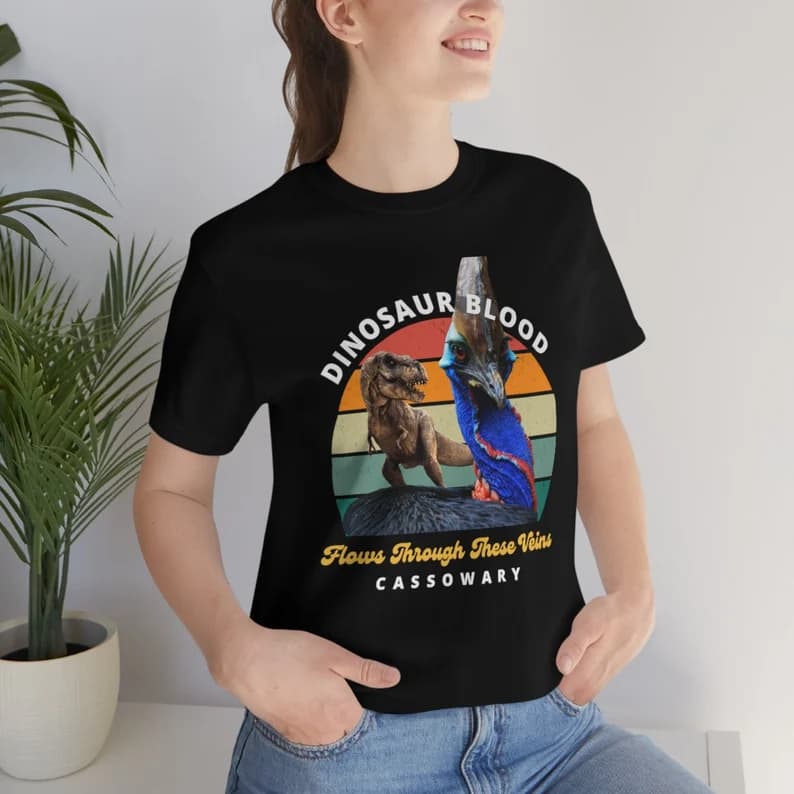
What Do You Do If You Meet a Cassowary in the Wild?
Never play dead when confronted with a wild cassowary. Back away slowly facing the bird and try to get behind a tree or some object.
Raise your arms high to make yourself look as big as possible.
If wearing a pack, put it in front of you to protect your midsection.
Most serious injuries, including puncture wounds and bone fractures, have occurred with the person crouching or having fallen to the ground.
Give wild cassowaries plenty of space and never try to get close for photos. If you ever do meet one unexpectedly don’t crouch or turn your back on the bird.
Best places to see Cassowaries: Daintree and Mission Beach
The original range of the southern cassowary was throughout the native tropical rainforests of north Queensland. Today the biggest population is found in the Daintree Rainforest north of the Daintree river. You could be fortunate enough to spot a cassowary in the wild near the award-winning Daintree Discovery Centre https://www.discoverthedaintree.com/ about two hours north of Cairns.
The following map gives a general idea of population density.

Surprisingly, another good place to see cassowaries in the wild is much further south in Mission Beach, a couple of hours south of Cairns. This seaside resort town has dedicated people who are very active in protecting the estimated 100 resident wild cassowaries and conserving their habitat.
This article provides detailed information on the best places to see cassowaries near Mission Beach.
Here’s an excellent video by BBC Earth showing the connection between cassowaries and dinosaurs. Includes great scenes of cassowary habitat in the tropical rainforests of North Queensland.
Most attacks involve cassowaries seeking food
The greatest number of attacks on people involve cassowaries expecting to be fed.
I would consider myself extremely fortunate to see a cassowary in the wild. However, you do need to stay aware of your surroundings… Casso-wary!! Stopping at a picnic area or going for a walk in the tropical rainforests of north Queensland can yield a surprise as shown in the following news report.
There are still people who don’t understand that feeding wildlife endangers the animals as well as themselves. Even though cassowaries are rare, a few birds have become habituated and are becoming very bold in soliciting for food. It is illegal to feed cassowaries (and other native wildlife in Queensland) without a permit.
In areas where people have been feeding cassowaries, some birds expect to be fed and can scare the hell out of people by running up to them. They can get aggressive and even start kicking. Feeding cassowaries has serious consequences for the birds and unsuspecting humans.
This video shows an example of a cassowary that expects to be fed.
Human feeding appears to change cassowary behavior, even though wild cassowaries are naturally wary and highly unlikely to attack without provocation.
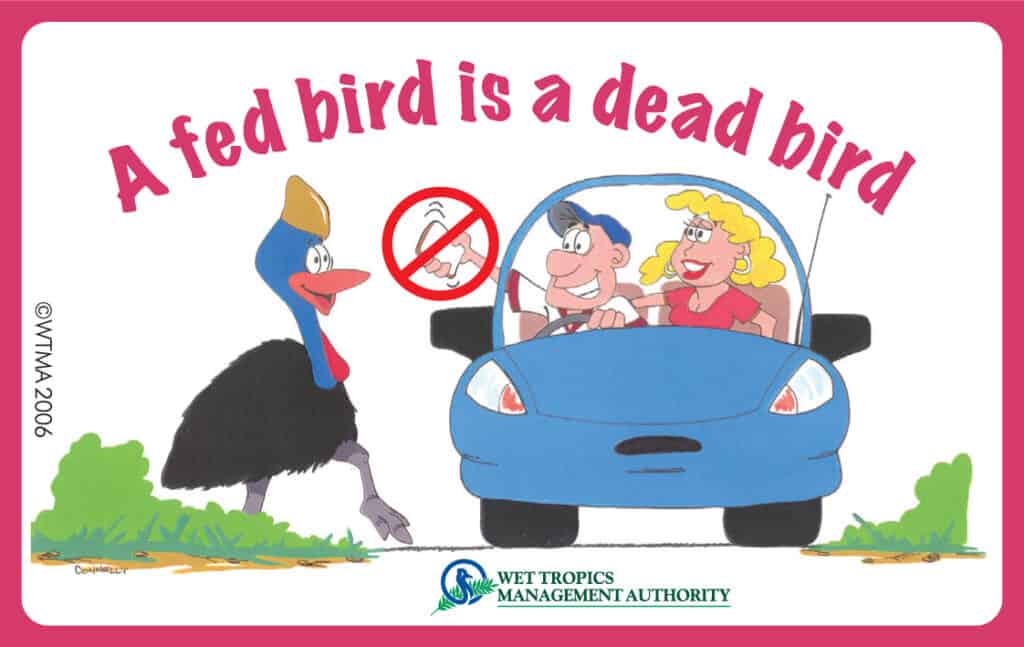
The casque is more of a mystery than we thought
The tall helmet or casque is one of the more intriguing features of an adult cassowary and gives it a distinctly dinosaur-like appearance. The purpose is unknown but recent research by Darren Naish and Richard Perron indicates that it may be associated with communication.
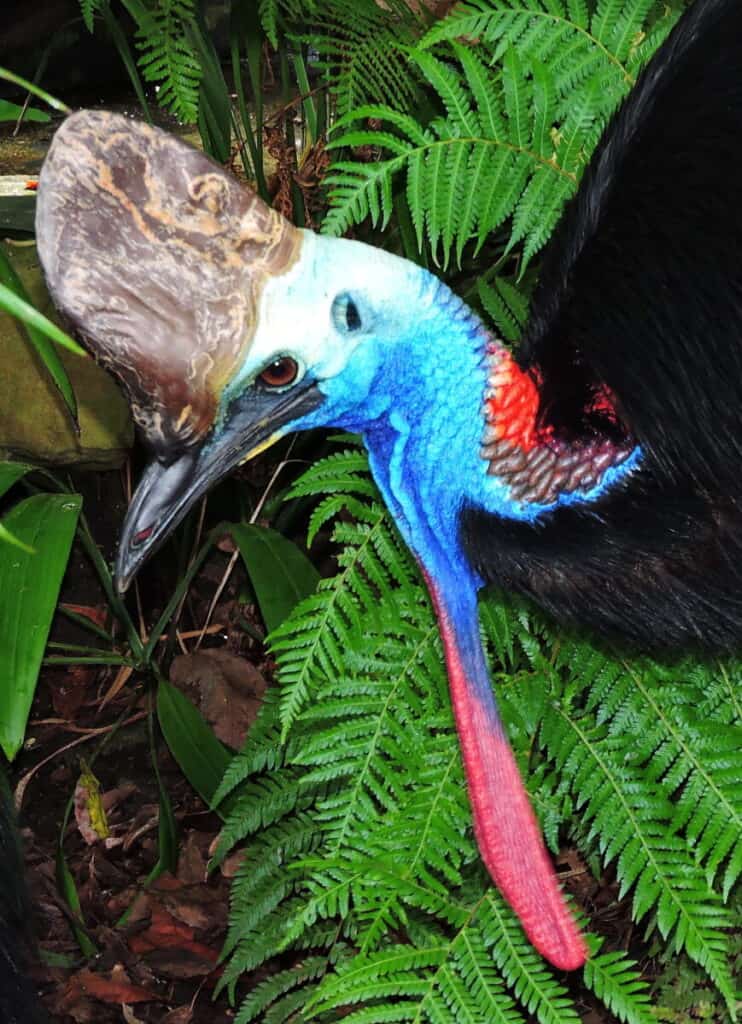
Cassowaries produce a low vibrating sound – or infrasound – and the casque may be used as a resonance chamber to amplify the sound and to possibly receive it as well. Another animal that communicates using such low frequencies is the elephant and, interestingly, some researchers believe that dinosaurs may have used infrasound to communicate!
For a long time, it was believed that the cassowary casque was rigid and hard, as found on museum specimens. There have been several theories about the use of the casque, one being to provide head-protection while running through the thick rainforest undergrowth.
Turns out that the casque is quite flexible and more delicate than thought and, until recently, it was believed to be filled with a foam-like material. In 2014, Darren Naish conducted an in-depth study of a casque from a deceased bird and found that the front half was filled with a fine mesh of bony material while the back half was an empty air chamber.
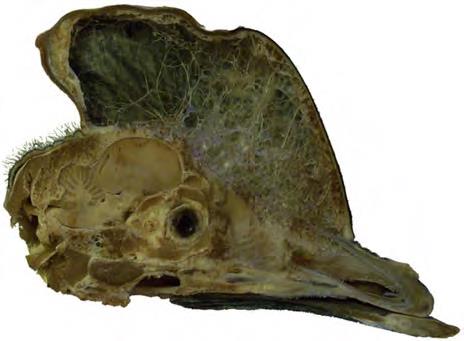
This latest research does not support the notion that the casque has evolved for bashing through the bush. It does seem to indicate that the casque is important for visual display (it continues to grow throughout the bird’s lifetime) involving courtship and territoriality and as an acoustic organ for communication and threat displays.
Cassowaries are normally solitary and don’t mix well with others, including members of their own species. But during the mating season they perform ritualised dances with members of the opposite sex. Part of the ritual is to make deep, guttural, low-frequency (20 – 30 Hz) sounds, with their head lowered and the casque pointing towards the partner.
If the casque is indeed used as suggested there’s a good possibility that casque size and form have evolved to play a role in sexual selection. Those birds with good-sized casques and resonant vocalizations may be more successful in attracting a mate. See my article on Attracting Mates and Sexual Selection.
Another interesting point is that male and female cassowaries both have large casques, suggesting that both sexes are using it in similar ways, whatever the function. This would seem to support the communication theory, with members of both sexes evaluating potential partners based on perceived fitness and quality.
Females Mate with Several Males, Males Raise the Chicks
Male and female roles are well-defined among the cassowaries. Females are larger than the males and focus on mating with as many males as possible.
Breeding season is from May to October and courtship is initiated by both males and females. The female’s territory overlaps the territories of more than one male in the wild. She will mate with more than one male and will lay eggs in the nests of several males.
That’s it for the maternal role of the female; she does not care for the eggs or look after the chicks. Once she’s mated with one male, she’ll move on looking for the next.
The male will incubate the eggs by sitting on them for days, even though they may not even be his eggs.
The nest is made up of decomposing vegetation that the male moves around to keep the temperature constant. Incubation takes about 50 days, and males often skip food and water for several days. Once the chicks have hatched the male takes sole responsibility for the chicks for up to 16 months. Males are extremely defensive of the chicks and will become aggressive if approached.
The chicks are well-camouflaged and blend into the rainforest undergrowth with their striped pattern. Here’s an excellent video showing a male with his young chicks still in their striped plumage.
Sighting a male cassowary with chicks in the wild is one of the paramount wildlife experiences in the rainforests of Australia.
Cassowaries are seed distributors par excellence
Cassowaries are a keystone species in the rain forests because they eat fruit whole and distribute the seeds throughout their territory.

Hundreds of species of plant rely on the fruit being eaten by cassowaries and pooped out for dispersal. They will supplement their diet with insects, frogs and birds if given the chance.
They can become territorial in protecting their food sources and when ripe fruit begins to fall, each bird will defend a tree from others until the fruit is depleted. Fruit is swallowed whole, even with large items as bananas and mangoes.
Watch this adult male swallow mangoes whole, while his large chicks try to get a tasty bite.
It’s related to the velociraptor (after all it is a bird)
Birds are literally the descendants of dinosaurs, although you wouldn’t think it looking at most birds. It’s a different story with the cassowary!
Dinosaurs are the most famous victims of the extinction at the end of the Cretaceous, 65 million years ago. But they weren’t alone. Nearly half of all species disappeared — including almost 75 percent of ocean species. Some of the dinosaurs did survive and evolved to become birds. (See my comprehensive article: Are Birds Dinosaurs? Latest Science (How Birds Evolved from Dinosaurs)
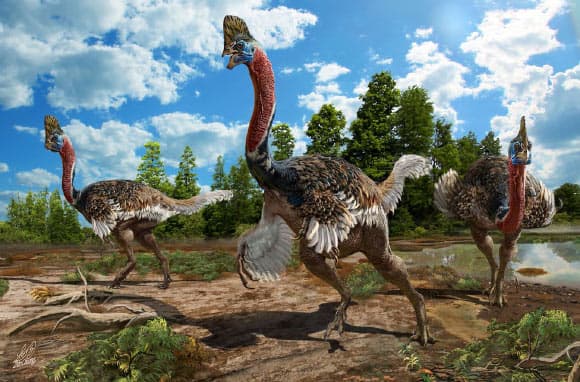
If you have any doubt about the relationship, take a look at the similarities in appearance between cassowaries and a recently discovered species of dinosaur. Although the appearance might be similar, this particular dinosaur is not related to the cassowary.
Cassowaries not only look like dinosaurs – they are dinosaurs! In fact, they are the direct descendants of theropod dinosaurs, such as T. rex.

Southern cassowaries are at serious risk of extinction
The southern cassowary is Australia’s second-largest bird after the Emu, and a distant relative of New Zealand’s extinct moa. It is facing an uncertain future as a species given habitat loss and degradation, increased traffic, and the presence of dogs.
Although estimates vary, it is certain that there are only a few thousand cassowaries alive, and most likely only 2000 or so southern cassowaries remaining in the wilds of Queensland.
What a shame to think that these rare and exceptional birds are at serious risk of extinction! Saving cassowaries will require a massive effort on the part of Australian governments, citizens, and tourists.
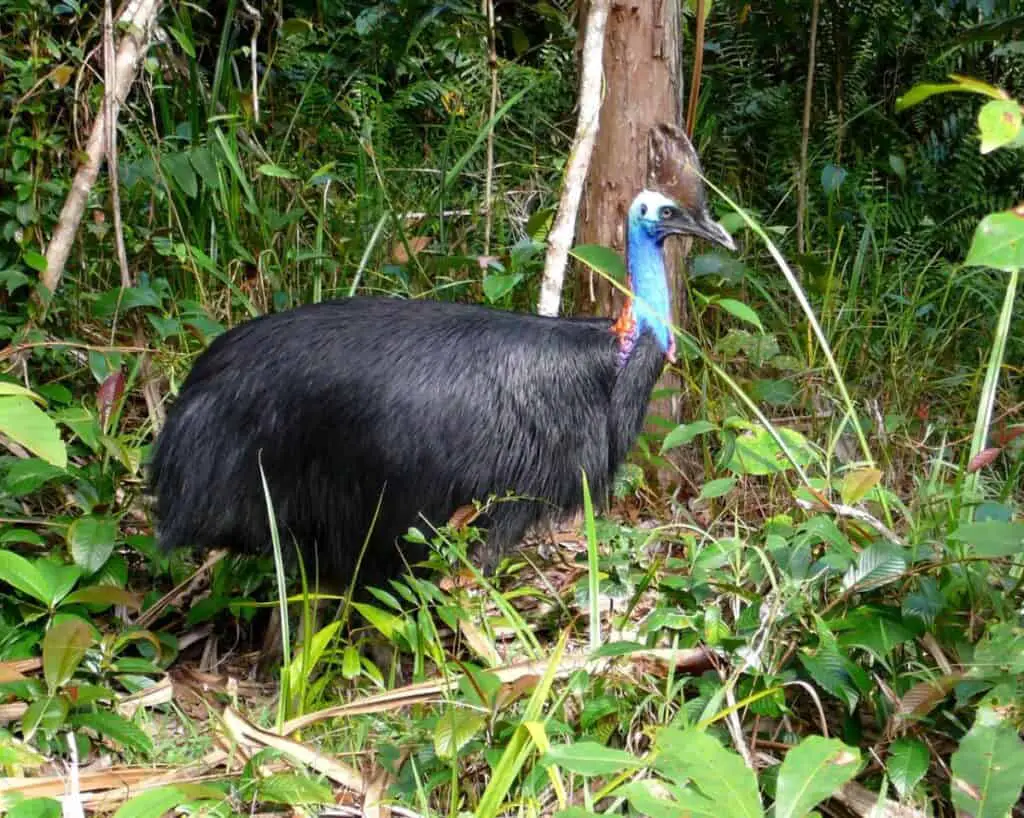
A trip to the rainforests of Queensland can be like a trip back through time to a different planet where unpredictable and potentially dangerous human-sized birds roam through undergrowth. Let’s do our best to keep this amazing bird alive and thriving in its native habitat.
Further Info
Excellent video on Cassowaries by Tim Faulkner with the Australian Reptile Park – well worth watching!
Structure and function of the cassowary’s casque and its implications for cassowary history, biology and evolution. Darren Naish and Richard Perron, 2014. Historical Biology. http://dx.doi.org/10.1080/08912963.2014.985669 File opens in PDF format
Interested in the amazing Land of Oz? Home of the Giant Cassowary.
As an Australian by birth, I have a great story about climbing the scariest tourist attraction in Australia!
You might also be interested in another Australian bird species; the fascinated Lyrebird – one of the most amazing mimics in the entire world!
The Gear We Travel With
We love to travel in search of exceptional wildlife viewing opportunities and for life-enhancing cultural experiences.
Here is the gear we love to travel with for recording our adventures in safety and comfort:
- Action Camera: GoPro Hero10 Black – we find these waterproof cameras are invaluable for capturing the essence of our adventures in video format. Still photos are great, but video sequences with all the sights and sounds add an extra dimension. I use short video clips to spice up many of my audiovisual presentations.
- Long Zoom Camera: Panasonic LUMIX FZ300 Long Zoom Digital Camera – I love this camera for its versatility. It goes from wide angle to 28X optical in a relatively compact design. On safari in Africa I’ve managed to get good shots of lions that the folks with long lenses kept missing – because the lions were too close! I also like the 120 fps slow-motion for action shots of birds flying and animals on the move. I call this my “bird camera.”
- 360 Camera: Insta360 ONE R 360 – 5.7K 360 Degree Camera, Stabilization, Waterproof – see my article How to Take Impossible Shots with Your 360 Camera. This camera is literally like taking your own camera crew with you when you travel! Read my article and you’ll see why.
- Backpack camera mount: Peak Design Capture Clip
- Drone: DJI Mini 2 (Fly More Combo) – this mini drone is made for travel!
- Water Filtration: LifeStraw Go Water Filter Bottle
- Binoculars: Vortex Binoculars or Vortex Optics Diamondback HD Binoculars (good price)
Check Out Our TOP Articles for Even More Fascinating Creatures
- Are Birds Dinosaurs? Latest Science (How Birds Evolved from Dinosaurs)
- How do Octopus Reproduce? (Cannibalistic Sex, Detachable Penis)
- Do Jellyfish have Brains? How Can they Hunt without Brains?
- Why are Deep Sea Fish So Weird and Ugly? Warning: Scary Pictures!
- Are Komodo Dragons Dangerous? Where Can you See Them?
- Koala Brains – Why Being Dumb Can Be Smart (Natural Selection)
- Why do Lions Have Manes? (Do Dark Manes Mean More Sex?)
- How Do Lions Communicate? (Why Do Lions Roar?)
- How Dangerous are Stonefish? Can You Die if You Step on One?
- What Do Animals Do When They Hibernate? How do they Survive?
- Leaf Cutter Ants – Surprising Facts and Adaptations; Pictures and Videos
- Irukandji Jellyfish Facts and Adaptations; Can They Kill You? Are they spreading?
- How to See MORE Wildlife in the Amazon: 10 Practical Tips
- Is it Safe to go on Safari with Africa’s Top Predators and Most Dangerous Animals?
- What to Do if You Encounter a Bullet Ant? World’s Most Painful Stinging Insect!
- How Do Anglerfish Mate? Endless Sex or Die Trying!
- How Smart are Crocodiles? Can They Cooperate, Communicate…Use Tools?
- How Can We Save Our Oceans? With Marine Sanctuaries!
- Why Are Male Birds More Colorful? Ins and Outs of Sexual Selection Made Easy!
- Why is the Cassowary the Most Dangerous Bird in the World? 10 Facts
- How Do African Elephants Create Their Own Habitat?
- What is Killing Our Resident Orcas? Endangered Killer Whales
- Why are Animals of the Galapagos Islands Unique?
- Where Can You See Wild Lemurs in Madagascar? One of the Best Places
- Where Can You see Lyrebirds in the Wild? the Blue Mountains, Australia
- Keeping Mason Bees as Pets
- Why do Flamingos have Bent Beaks and Feed Upside Down?
- Why are Hippos Dangerous? Why Do They Kill People?


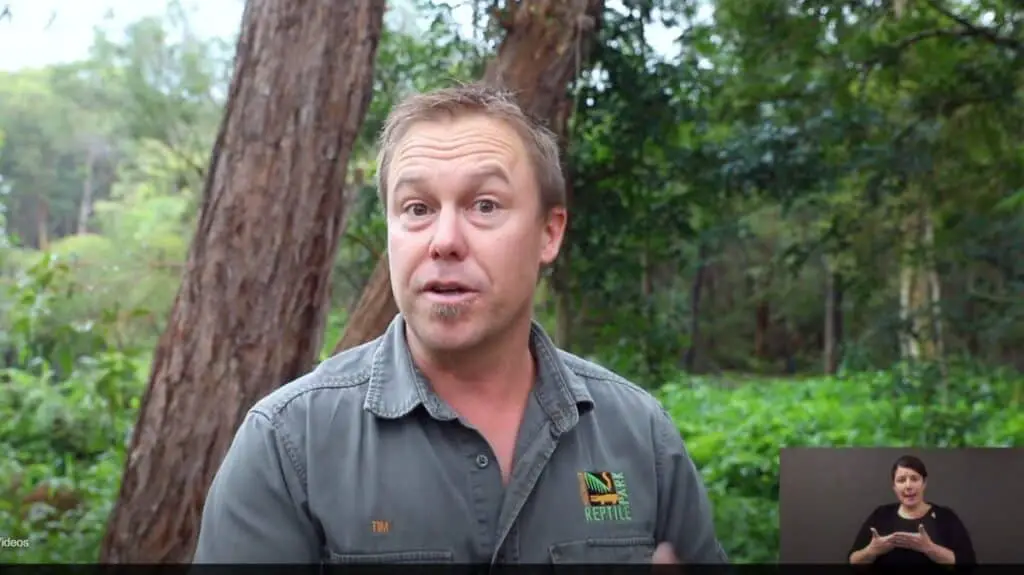

1 thought on “Why is the Cassowary the Most Dangerous Bird in the World? 10 Facts”
Comments are closed.